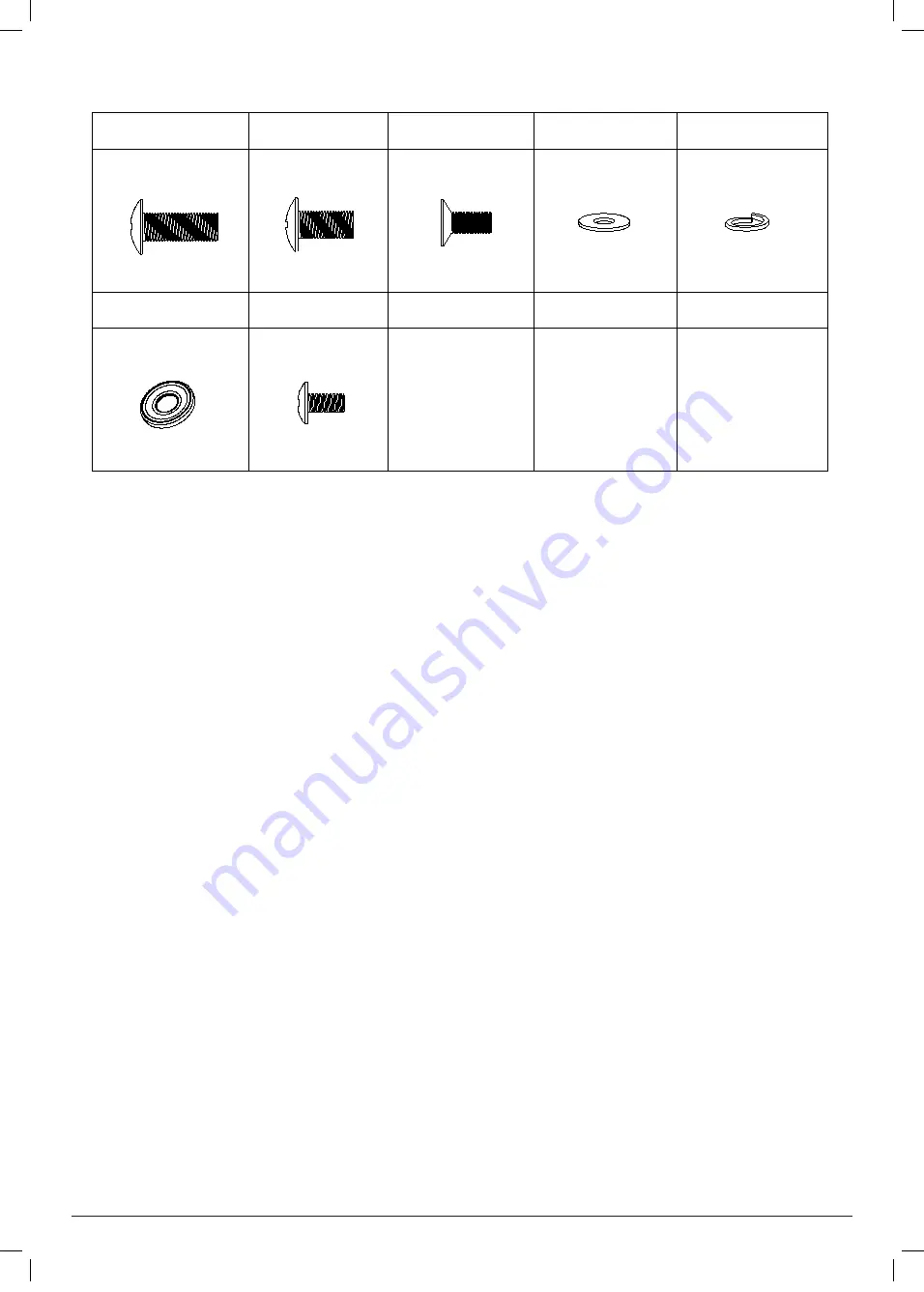
24
546565.A.3 - May 2019
BG2294B/6B-BOLT PACK
A.
M6*16 Screw *
16pcs
B.
M6*12 Screw *
41pcs
C.
M4*10 Screw *
24pcs
D.
M6
Flat
Washer
*
16pcs
E.
M6
Spring
Washer
* 16pcs
F.
M6 *4pcs
G. M4*8 Screw *
18pcs
CARE AND MAINTENANCE
Regularly clean your barbecue between uses and especially
after extended periods of storage. Ensure the barbecue and its
components are sufficiently cool before cleaning. Do not leave the
barbecue exposed to outside weather conditions or stored in damp,
moist areas.
• Never douse the barbecue with water when its surfaces are
hot.
• Never handle hot parts with unprotected hands.
Whilst our products are made to the highest standards and all care
is taken to make them as weather proof as possible, we cannot
accept responsibility for rust occurring on exposed metal parts
unless this is a result of faulty manufacture of parts.
In order to extend the life and maintain the condition of your
barbecue, we strongly recommend that the unit is covered when
not in use, especially during the winter months.
DIRT
Like any surface that is exposed to the environment especially in
coastal areas, stainless steel can get dirty. Cleaning with warm
water with or without a gentle detergent is sufficient. Next in
order are mild non-scratching abrasive powders such as typical
household cleaners.
These can be used with warm water, nylon bristle brushes,
sponges, or clean cloths. Carbon steel brushes or steel wool should
be avoided as they may leave particles embedded on the surface
which can lead to RUSTING. Cleaning should always be followed by
rinsing in clean hot water.
GREASE
Grease may soil stainless steel surfaces in food preparation. These
soils may be mildly corrosive if left or may not allow the surface
to maintain passivity, and so regular removal is a necessity for the
appearance.
TYPES OF CLEANERS AND METHODS
Consider the possibility of scratching and the potential for post-
cleaning corrosion caused by incompletely removed cleaners. Avoid
using abrasive cleaners unless absolutely necessary.
CLEAN WATER AND WIPE
A soft cloth and clean warm water should always be the first choice
for mild stains and loose dirt and soils. A final rinse with clean
water and a dry wipe will complete the process and eliminate the
possibility of water stains.
HOUSEHOLD CLEANERS
Household cleaners fall into two categories: detergent (non-
abrasive) and abrasive cleaners. Abrasive cleaners are more
effective but introduce the possibility of scratching the surface. A
neutral cleaner low in chloride is essential. The cleaning method
generally employed with these cleaners is to apply them to the
stainless surface and follow by cloth wiping in the direction of the
grain or polish lines (not across them). The cleaned surface should
be thoroughly rinsed with clean water and wiped dry with a soft
cloth if water streaking is a consideration.
CAST IRON COOKING SURFACES
Before cooking with the grill, flat plate or deep dish (if supplied with
your BBQ) clean these with hot soapy water to remove any oil or
residue from the packaging or manufacturing process. Wash with
clean water and let the plates dry naturally. Prior to lighting your
BBQ place them back into the BBQ. Then after lighting your BBQ,
let the plates warm up slowly over a period of 30 minutes, during
this time increasing the heat.
You will notice slight vapors rise from the plates, this is natural as
residues are burned off. Turn off your BBQ to allow the plate to
cool slightly. The plates can now be prepared with the addition of
cooking oil. Take care that the plates are not at a temperature where
adding the oil will cause a hazard. Brush the oil over the plate,
allowing the oil to be absorbed into the surface. Allow the plate
to fully cool, then remove any excess oil. the BBQ is now ready.
Repeat the above to keep the plate and grill in a ready condition
after each BBQ session.
PORCELAIN ENAMEL COOKING SURFACES
Porcelain Enamel surfaced items should be treated with care and
should not be cleaned with an abrasive cleaner or scratchy cleaning
item. Surfaces will crack or chip if hit or dropped. Porcelain Enamel
surfaces should NOT be regarded as ‘Non-stick’, use of cooking
oil is required as normal. Food will likely stick to an overheated or
Содержание Barbecues
Страница 27: ...27 546565 A 3 May 2019 ...





































